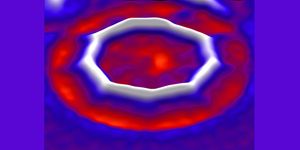Quantum Darwinism: the Quirky Marriage of Two Distant Theories
Charles Darwin wouldn't have foreseen that one day his theory of natural selection would be borrowed to solve a puzzle that bothers quantum physicists for decades.
Since its birth in the early 20th century, quantum mechanics has been fascinating because, for the first time, scientists have formulated a sound hypothesis to describes the world at the atomic and subatomic scale. However, the theory that's built upon uncertainty and probability was anything but instinctual and has many quirky properties.
For example, physicists had trouble explaining the transition from the quantum-dominated microscopic world to the macroscopic universe that's governed by classical physics—a process also known as the collapse of wave function. To put this Sheldonian concept in a Penny-style language, once an observer measures the properties (such as position and speed) of a particle, suddenly all the possibilities of the properties become reduced to one.
In the 1970s, the late German physicist Heinz-Dieter Zeh first identified this phenomenon and called it decoherence, which describes the disappearance of “quantumness” into the observer's environment. Wojciech Zurek, a theoretical physicist at the Los Alamos National Laboratory, followed Zeh's footstep and worked further on this idea. He compared his reasoning to Darwin's theory of natural selection, hypothesizing that during decoherence definite properties of objects are selected from a large pool of possibilities. The properties that are considered "fittest" will always make it into the observer's environment.
Like every scientific theory in the world, no matter how convincing it is, it requires the verification of objective and vigorous experiments. In the past year, three independent studies put Zurek's theory to tests and achieved positive results.
Take one of them, conducted by a group of Chinese physicists at the University of Science and Technology of China, for example. In this study, the researchers constructed a so-called quantum Darwinism simulator, within which a single photon acts as the quantum system and a handful of others serve as the environment (observers).
Their simulation study verified the existence of "the redundancy of the system's classical information": as long as the system-environment interaction is strong enough, one single environment photon would be sufficient to cause decoherence. Because the information on other environment photons is simply replicas imprinted by the system.
It appears that quantum Darwinism has found its footing and the first steps to test the theory were successful. More experiments are expected to further investigate quantum Darwinism with more complex quantum environments.
Quantum Darwinism - Dr. Wojciech Zurek (IQC)
Source: Quanta Magazine









